Click on an image to go directly to a system or scroll to see the systems in this gallery.
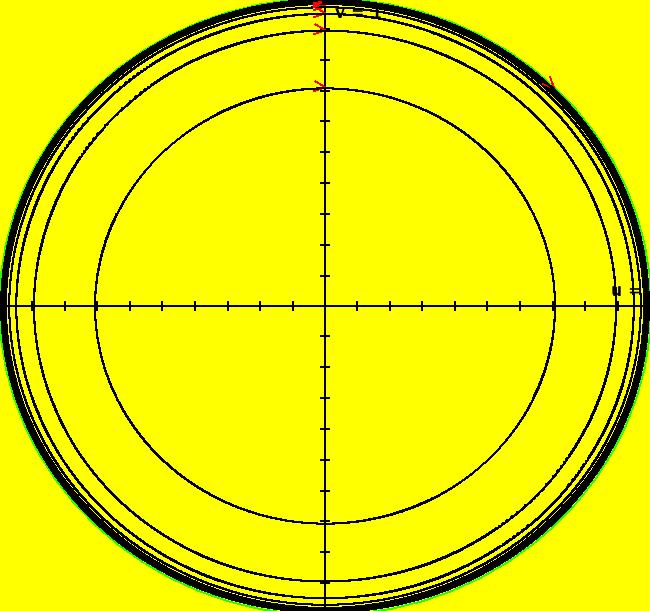 |
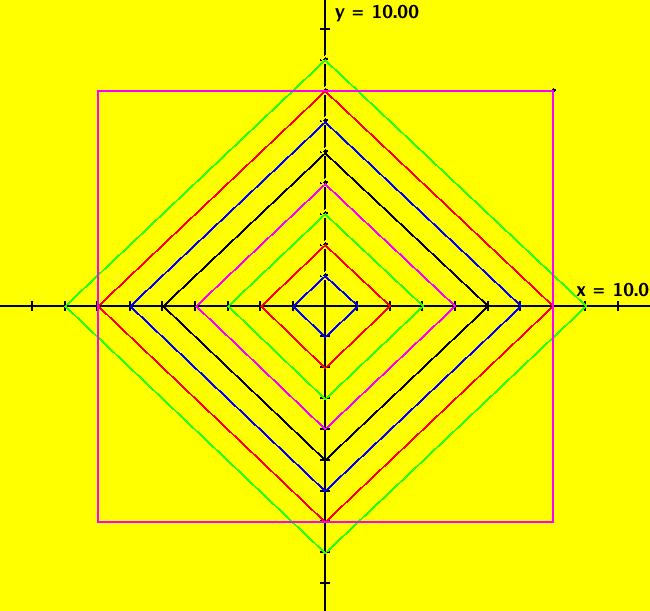 |
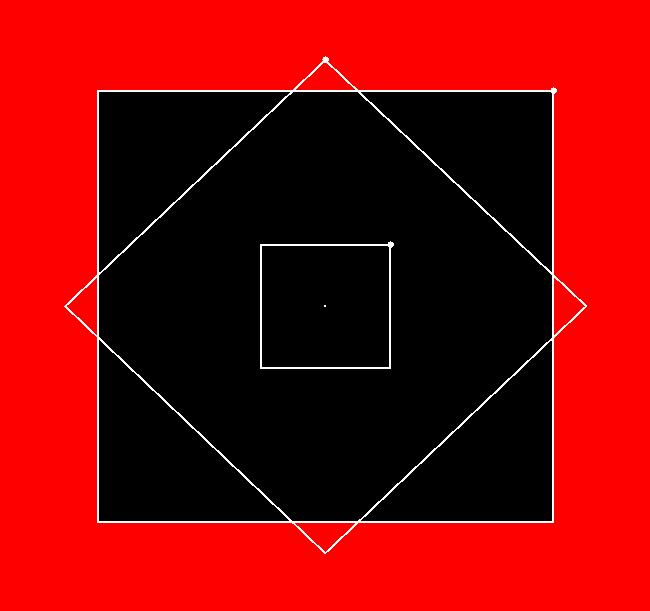 |
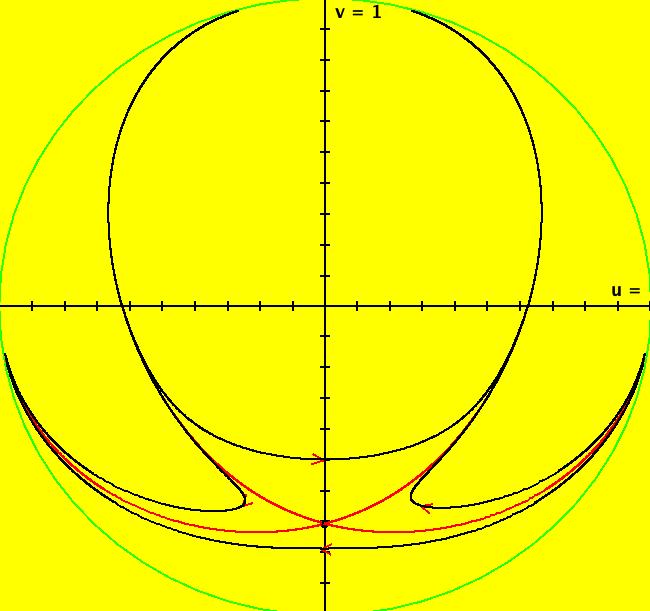 |
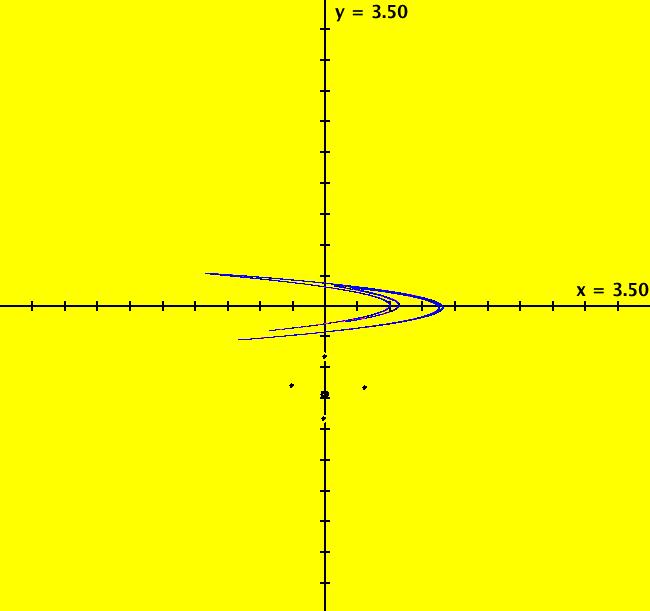 |
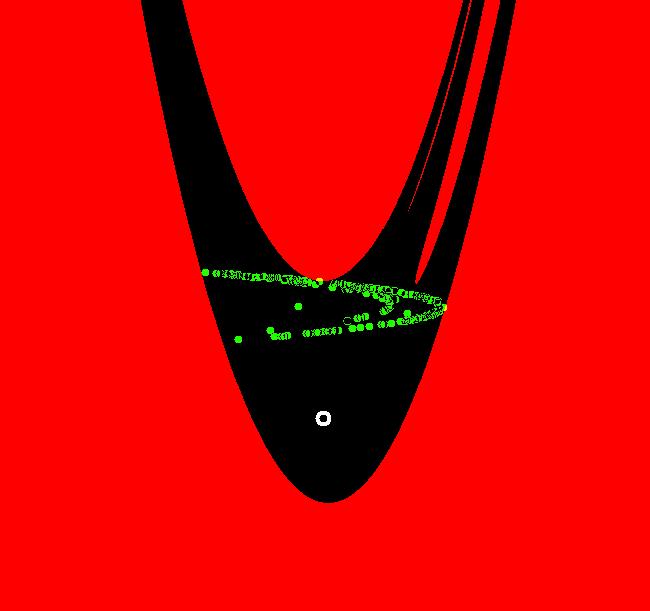 |
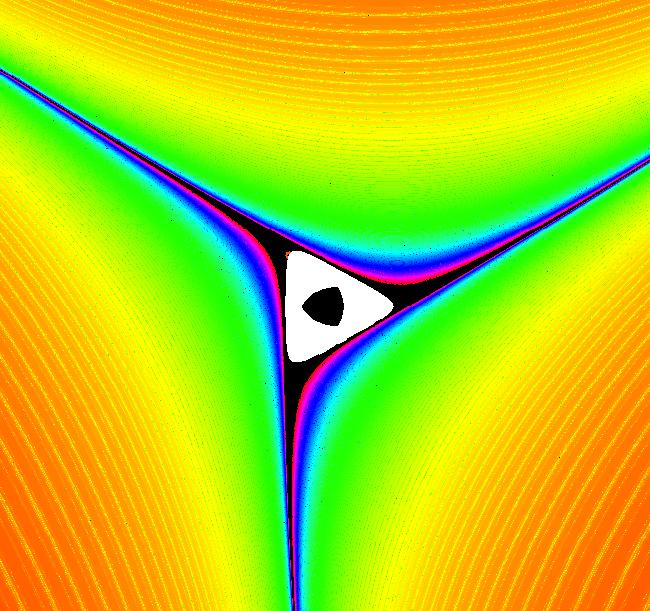 |
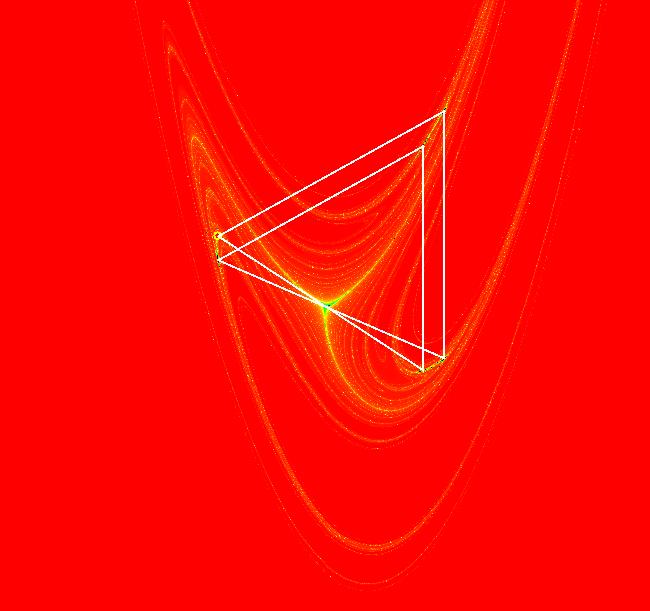 |
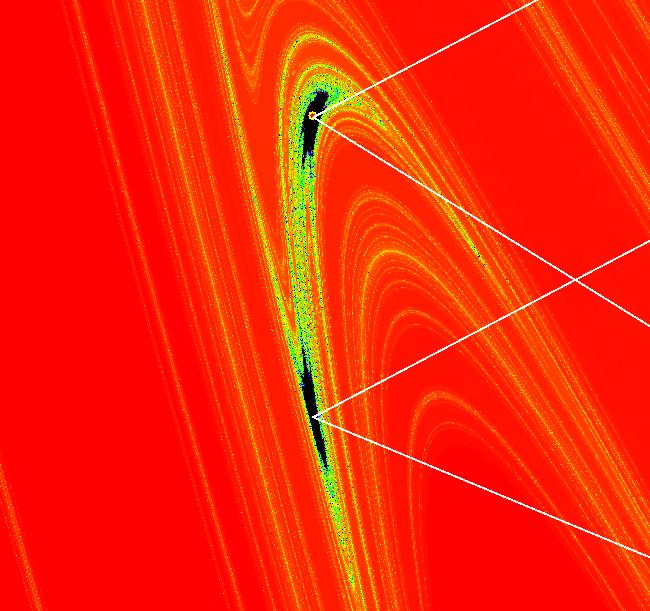 |
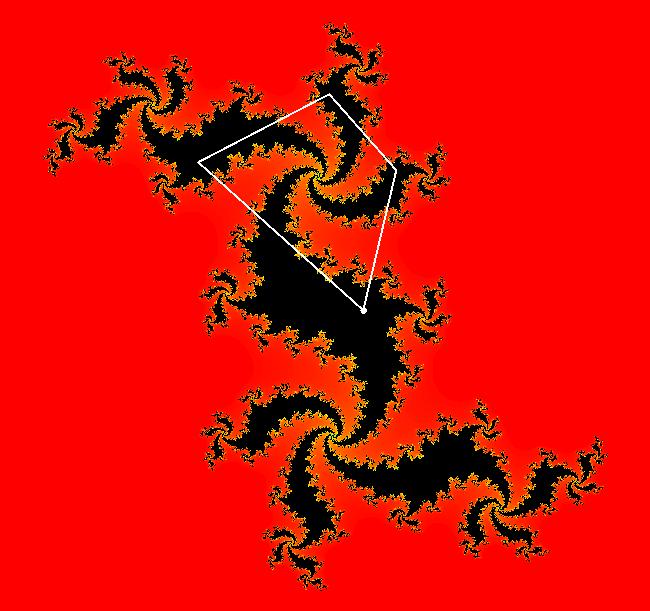 |
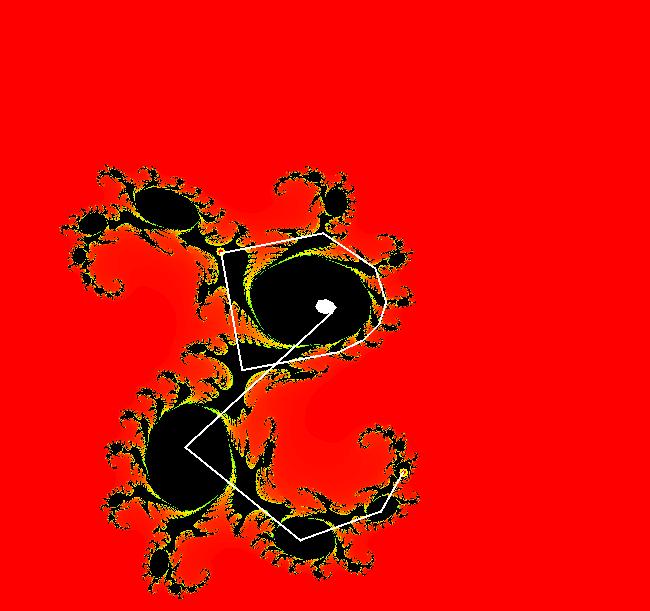 |
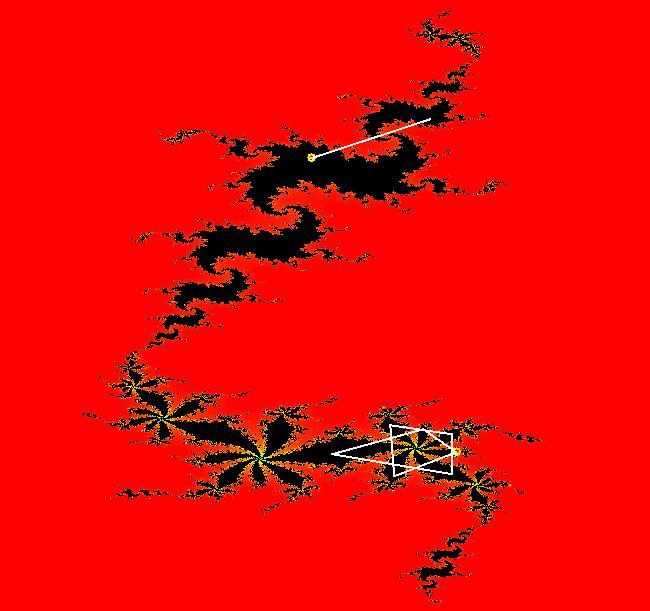 |
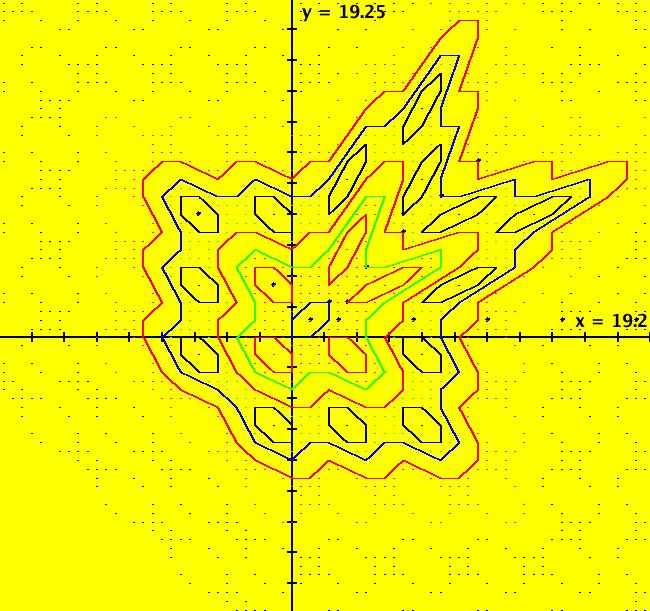 |
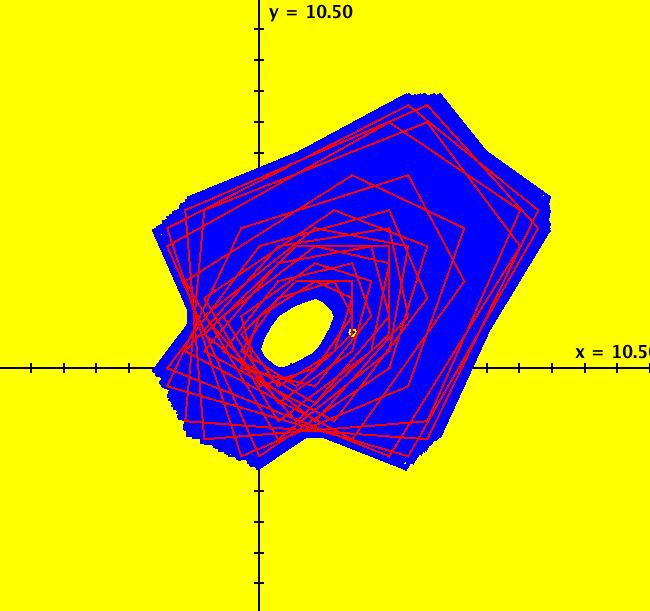 |
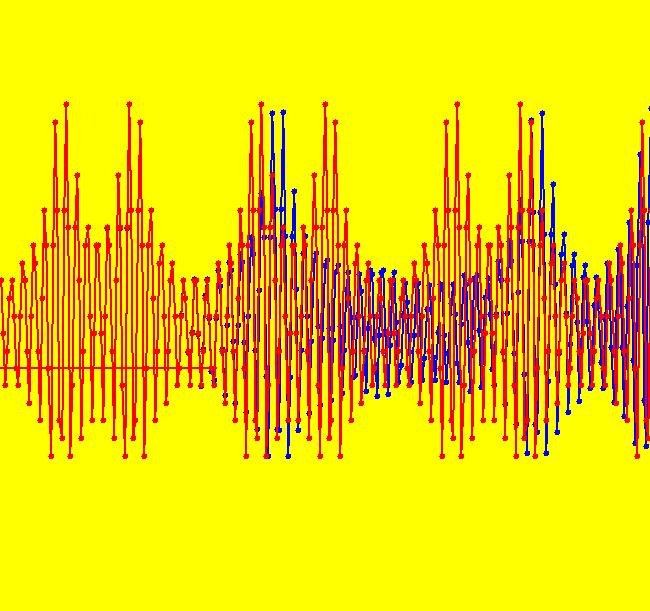 |
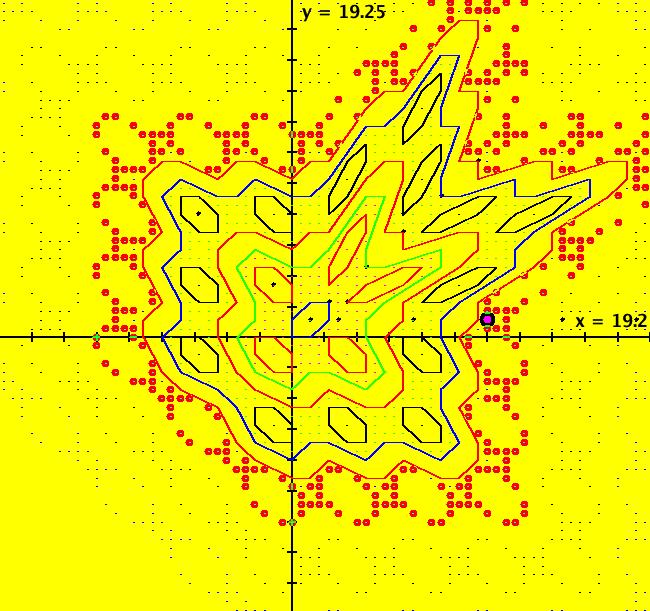 |
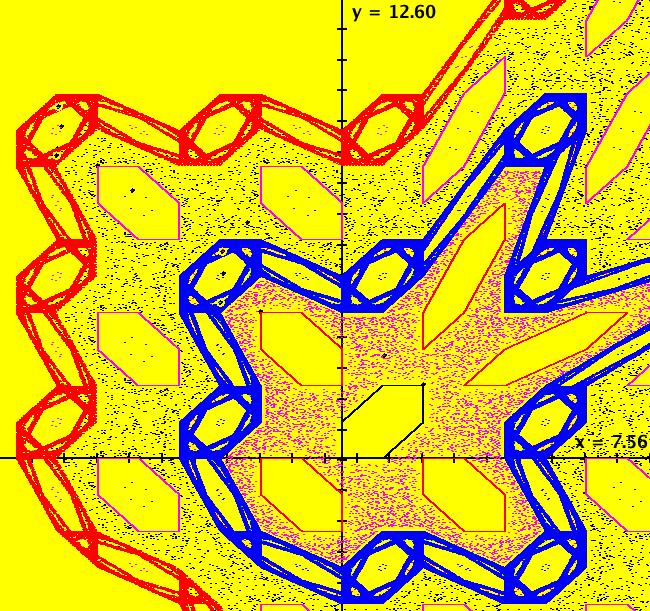 |
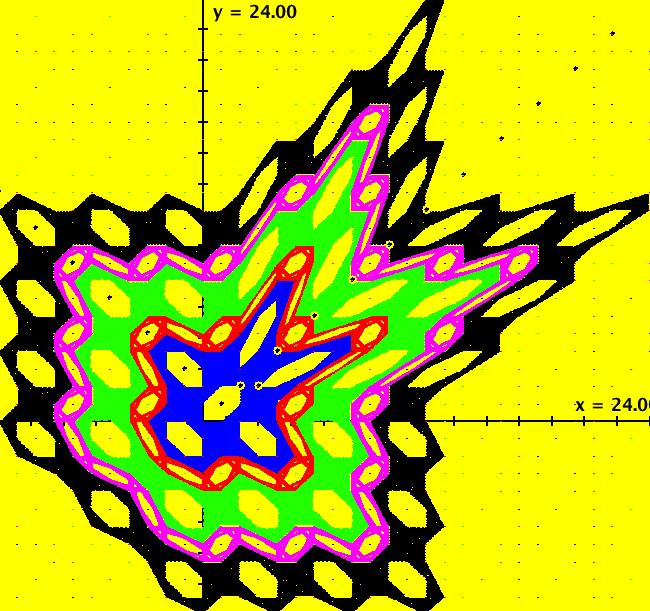 |
 |
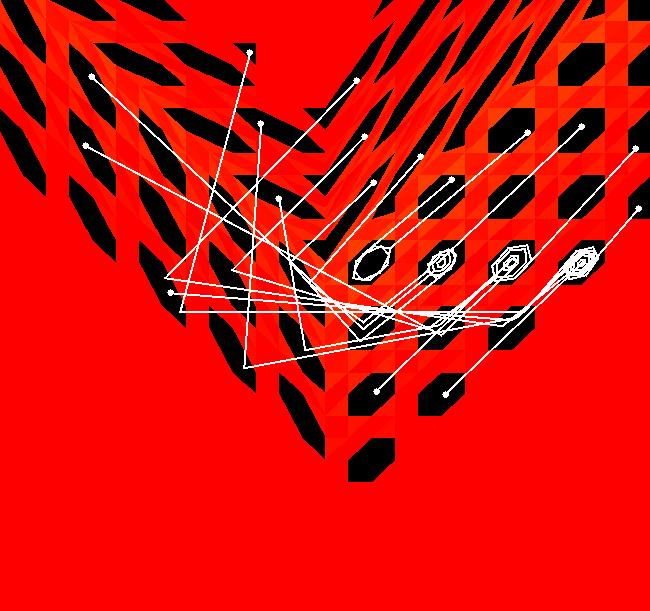 |
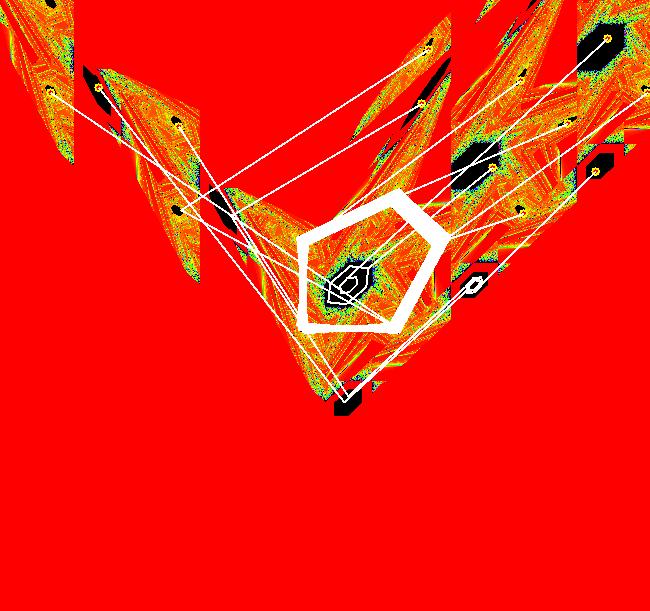 |
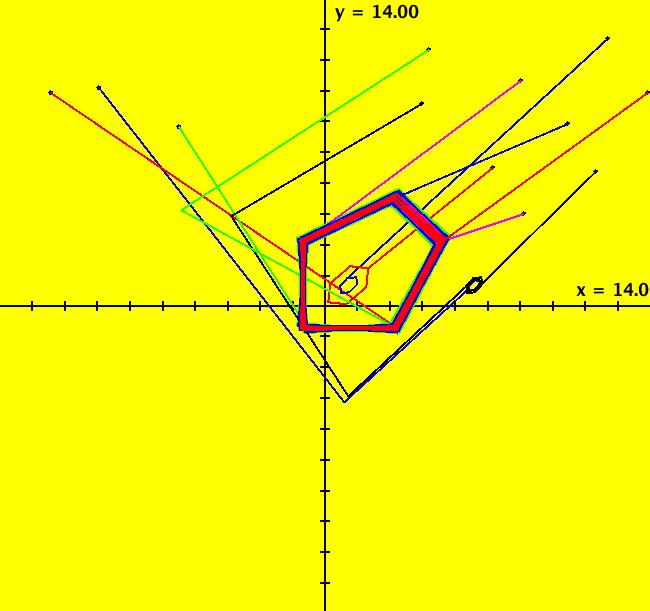 |
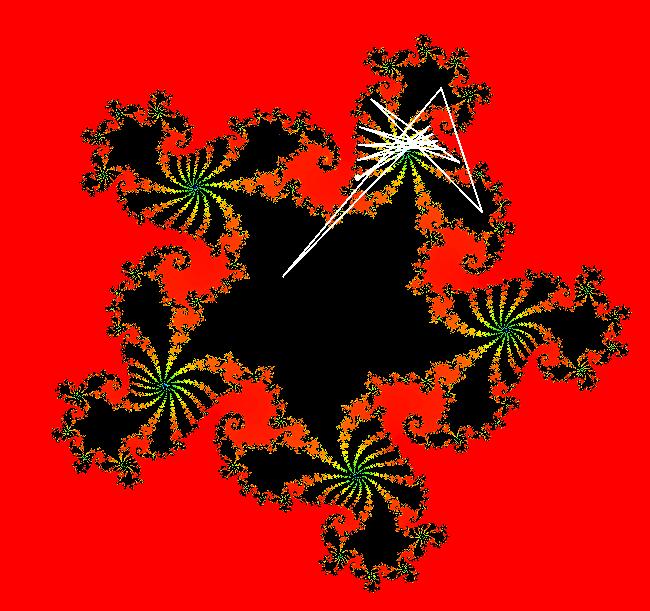 |
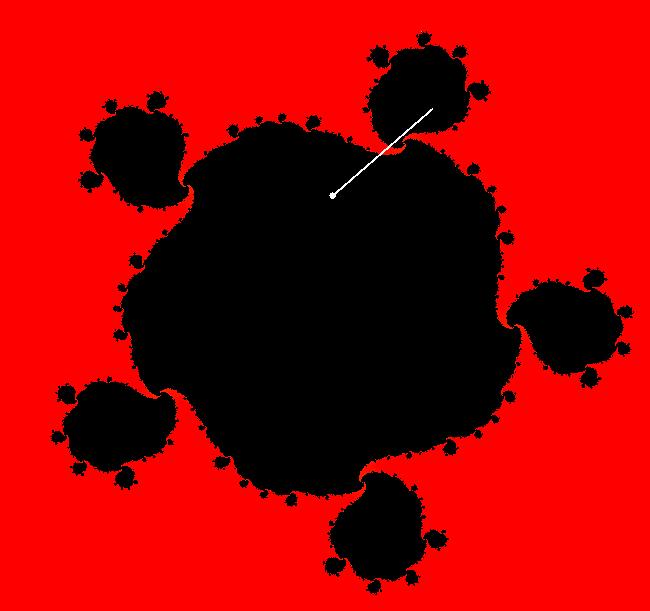 |
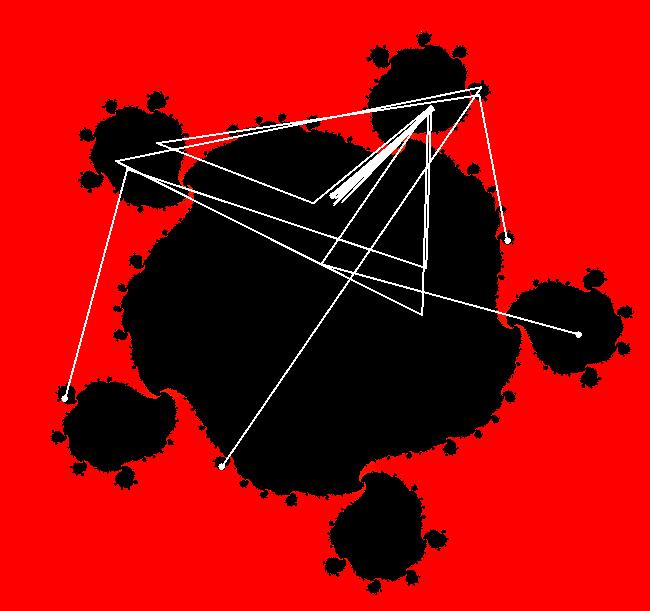 |
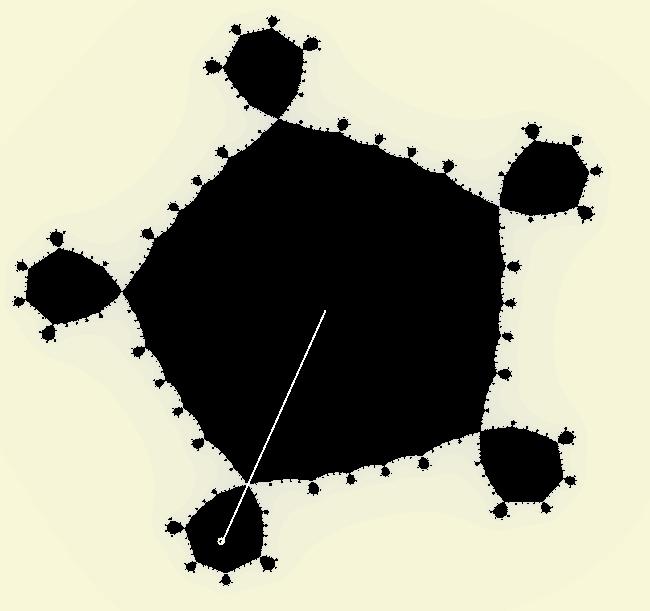 |
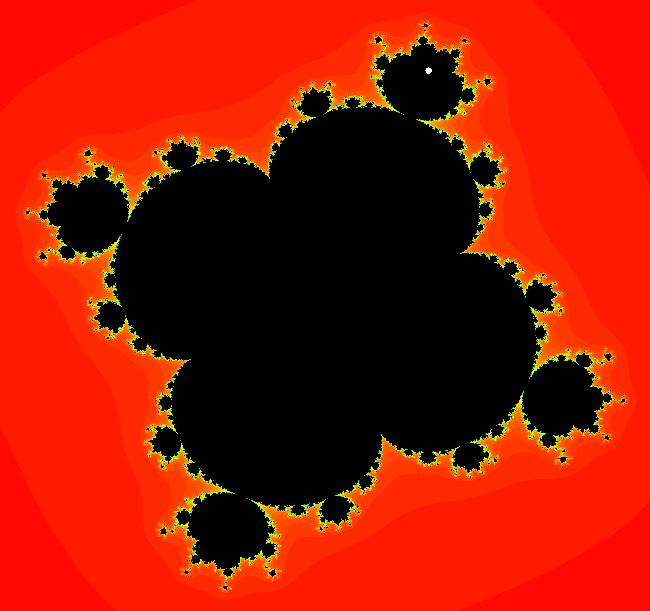 |
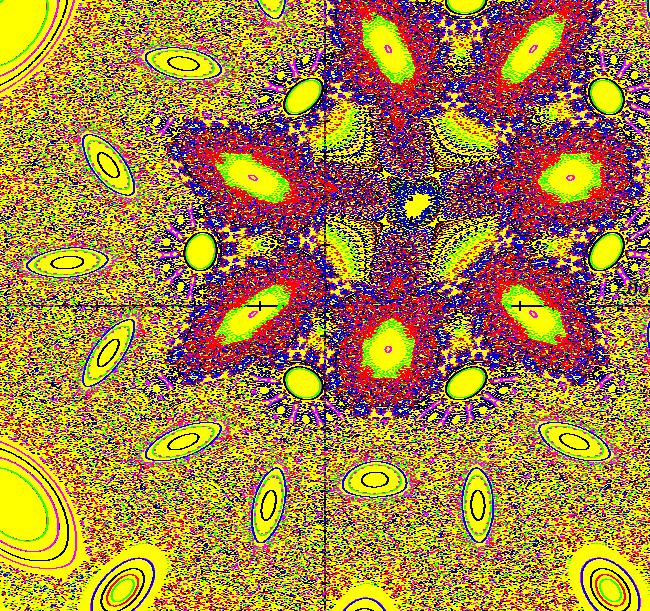 |
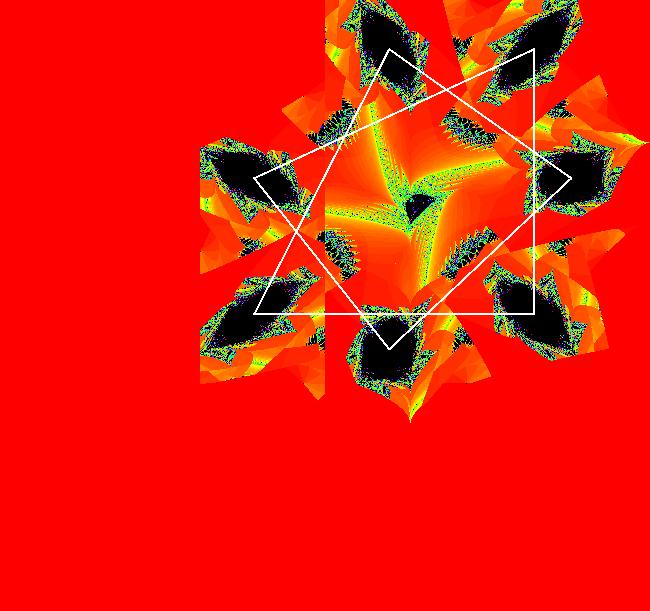 |
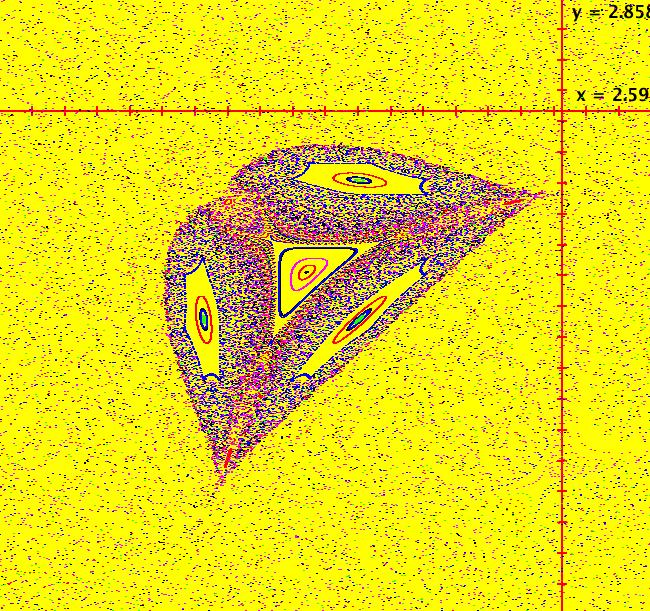 |
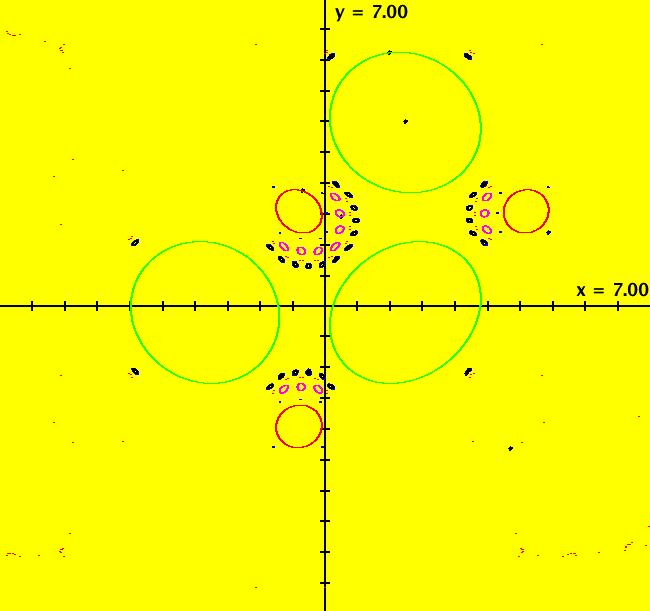 |
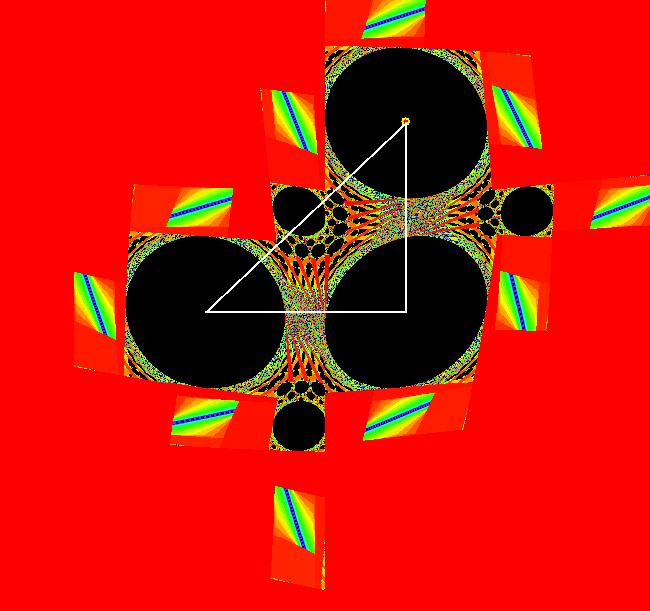 |
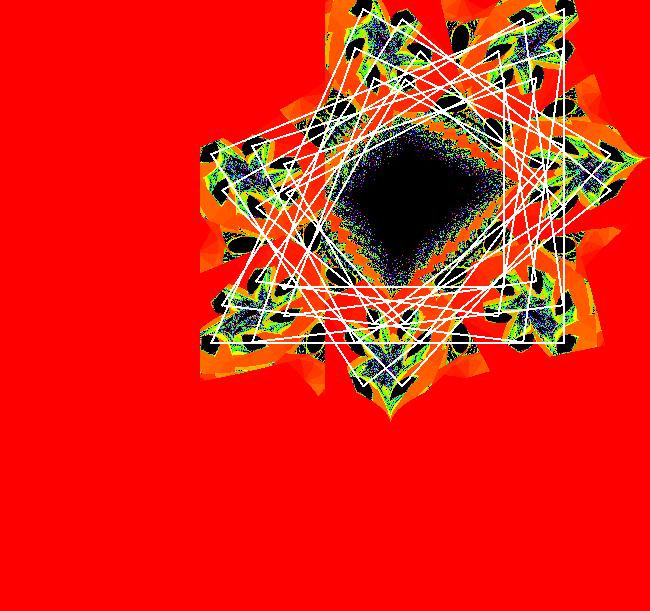 |
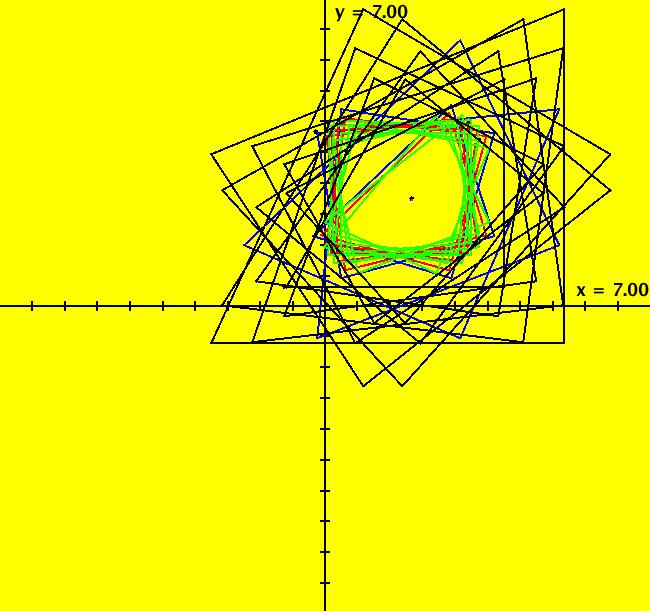 |
 |
| OdeFactory Images and Annotations | |
|
An OdeFactory Slide Show Click on a slide to zoom in. Click "video" to see a video. |
View/Sys/Gal: Ode " Separatrix Systems for 2D Iteration Maps" in "IMapSeparatrixExs." --- Definition of a Separatrix --- A separatrix is defined as something that divides or separates. --- Definition of an Ode Separatrix System --- Classically separatrix systems were defined and studied for Odes. For a 2D system of Odes, the separatrix system is a set of continuous solution curves that partition the phase space into regions containing different topological equivalent solution curves. The separatrix system graphically summarizes all of the dynamical properties of the dynamical system. Reference. --- Finding an Ode Separatrix System --- Ode separatrix curves are generally found by studying trajectories near fixed points. In OdeFactory, the fixed points can be found by selecting "Show Colored Vector Field w/Nullclines." Starting trajectories near the fixed points gives red solution curves that are the separatrices. --- Definition of an IMap Separatrix System --- 2D IMaps generate discrete sequences of points in +t called orbits. Since IMaps do not have continuous solution curves the Ode definition of a separatrix system does not apply to IMaps. Consider this to be a working definition: the separatrix system for an IMap consists of the discrete boundaries of prisoner sets. --- Definition of an IMap Prisoner Set --- A prisoner set is any region of R2 containing a family of topological equivalent IMap orbits. --- Definition of an EMap Prisoner Set --- An EMap prisoner set is defined algorithmically. The defining algorithm depends on two parameters and the shape of the "prison." The two parameters are: the bail out parameter M and the color table size K. M is related to the size of the prison. In OdeFactory, for the EMap view, M = 49 and K = 100. For EMapMax K = 512. Increasing M and/or K gives a more detailed prisoner set but it increases the image rendering time. The prison can be a circle of radius 7 centered at (0,0) or a 14X14 square centered at (0,0). A seed is in the prisoner set if, after the first iteration, it stays inside the prison for at least K iterations. Note that the EMap and IMap definitions of a prison set are different. An EMap prison set is small and centered at the origin whereas an IMap prison set is large. --- Finding an IMap Separatrix System. --- To construct an IMap separatrix system begin by setting the axis parameters in the graphics area to +-7. Next, in the IMap view, and with "Show 2D IMap Orbit Sequence" off, drag to start a several IMap orbits. If the image begins to look like a complicated oriental rug you will need to use the IMap view to find the IMap separatrix system. The separatrix system is generally the boundaries of the KAM islands. If you do not get an oriental rug-like IMap, you should work in the EMapMax view - with a square prison. The separatrix system is the boundaries of the (black) EMapMax prisoner set. --- Miscellaneous --- Prisoner set regions are often distinguished by regions with different kinds of attractors. Attractors include: asymptotic fixed points, asymptotic limit cycles and strange attractors. Other types of prisoner set regions, without attractors, are regions with families of cycles and chaotic regions. It should be noted that in the IMap view, using a square prison, the boundaries of n KAM islands in a KAM island chain form the separatrix of a prisoner set in the EMapMax view. Each orbit in the prisoner set will be periodic with period divisible by n. --- The Systems --- The systems are ordered in this gallery by the increasing complexity of their separatrix systems. A: linear, quadratic B: complex systems: z <- f(z,c) C: non-smooth linear D: 5th deg poly E: non-smooth non-linear
|
|
View/Sys/Gal: EMap "A: linear, EMapMax" in "IMapSeparatrixExs." The system is the simple harmonic oscillator (SHO). This iteration is defined by: x <- y, y <- -x. EMapMax CT: 0 The separatrix system, for both the IMap and Ode views, is a circle of infinite radius centered at the fixed point (0,0). In the Ode view the trajectories are all circles with period 2 π centered at the fixed point (0,0). Image 1: The Ode trajectories in R2+. In the IMap view, all orbits are squares with period 4 centered at the fixed point (0,0). Image 2: The IMap orbits. Image 3: The EMap for a square prison with seeds at (7,7), (0,8), (2,2) and (0,0). Sometimes the boundary of an EMap prisoner set will be a separatrix for the IMap but that is not the case for this system.
|
|
|
View/Sys/Gal: EMap "Ab: quadratic, with a strange attractor, EMapMax" in "IMapSeparatrixExs." This system is called the Henon map. This iteration is defined by: x <- 1+y-a*x^2, y <- b*x. Parameters are: a = 1.4000; b = .3000; EMapMax CT: 0 Image 1: The Ode separatrix system (red curves) in the R2+ view. The fixed point is at (0,-1). Image 2: The IMap view showing a strange attractor (blue curve). For this system you need to use the EMapMax view to find the IMap separatrix system. All orbits starting in the red region go to infinity and all orbits starting in the black region go to the strange attractor. Image 3: The EMapMax view showing the IMap's separatrix system as the border of the EMap's prisoner set. The green dots show the strange attractor after a Flow animation starting at the white dot with the black center.
|
|
|
View/Sys/Gal: EMap "Ac: quadratic, with a very small prisoner set, EMapMax" in "IMapSeparatrixExs." This iteration is defined by: x <- x*cos(a)-(y-x^2)*sin(a), y <- x*sin(a)+(y-x^2)*cos(a). Parameters are: a = 2.100; EMapMax CT: 0 This is another system for which you need to use the EMapMax view to find the IMap separatrix system, however, the system has a very small prisoner set. This complicates the search. Image 1: In the EMapMax view the boundary of the inner prisoner set is the outer edge of the white region. The tails of the black regions are not part of the prisoner set. The viewing area is .175 by .175. Image 2: After zooming out 3X (7 by 7 view), we see the outer component of the prisoner set consists of a KAM island ring of 6 islands. There is a per-6 orbit at seed (-1.158468,0.803303). All orbits in the KAM island ring seem to be periodic with periods divisible by 6. Image 3: Zoomed in view of the leftmost pair of KAM islands.
|
|
|
View/Sys/Gal: EMap "B: z<-z^2+c, c=.25+i*.56, EMapMax" in "IMapSeparatrixExs." This iteration is defined by: x <- x^2-y^2+p, y <- 2*x*y+q. Parameters are: p = .2500; q = .5600; EMapMax CT: 0 Complex IMaps of the form z <- f(z,c) often have compact EMaps with fractal separatrices and attractors that are limit cycles. This is a single connected prisoner set with a fractal boundary and an asymptotic per-4 attractor. Image 1: Shows the per-4 limit cycle attractor.
|
|
|
View/Sys/Gal: EMap "Bb: z <-z^2+c*z, p = .62, q = .78, EMapMax, per-1 and 8" in "IMapSeparatrixExs." This iteration is defined by: x <- p*x-q*y+x^2-y^2, y <- p*x+q*y+2*x*y. Parameters are: p = .6200; q = .7800; EMapMax CT: 0 All orbits either go to infinity or 1-hop to d <= 7 so use the EMapMax view to find the separatrix system. This looks like one connected prisoner set but it is not. The prisoner set is really two different completely disconnected sets with fractal borders, each with an infinite number of segments. Orbits in the elliptically shaped regions go to a fixed point at (0,0), orbits in the 8-petal regions go to a per-8 limit cycle with seed (-0.471361,0.288818). Image 1: The EMapMax view of the per-8 limit cycle and an elliptical segment orbit that goes to the fixed point at (0,0).
|
|
|
View/Sys/Gal: EMap "Bc: z <- e^z+z*(1-z)+c, c=-1.1+i*.3, EMapMax. per-2 and 7" in "IMapSeparatrixExs." This iteration is defined by: x <- p+x-x^2+y^2+e^x*cos(y), y <- q+y-2*x*y+e^x*sin(y). Parameters are: p = -1.1000; q = .3100; EMapMax CT: 0 There are 2 basic fractals here: 2-petal and 7-petal spiral fractals. The tails of the 2-petal spirals are 7-petal spirals and vice versa. All orbits in the 2-petal spirals are asymptotic to a per-2 orbit and all orbits in the 7-petal spirals are asymptotic to a per-7 orbit. The seeds are: per-2 seed (0.823383,1.329076), per-7 seed (1.476319,-1.214567). The separatrix system has two parts. One is the border of the 2-petal spirals and the other is the border of the 7-petal spirals. Image 1: The EMapMax view showing the per-2 and per-7 limit cycles.
|
|
|
View/Sys/Gal: IMap "C: linear w/abs, some IMap separatrices" in "IMapSeparatrixExs." This iteration is defined by: x <- 1-y+abs(x), y <- x. This is the well known gingerbread man map. The system gives "oriental-rug" style IMap images. Orbits are bounded in nested rings that go to infinity. For this system, there are an infinite number of separatrices that can be classified into two different types: (a) ring boundaries - boundaries enclosing chains of islands (the green, red, blue, and red many-sided polygons) that separate adjacent chaotic regions and (b) island boundaries - outer boundaries of individual islands (the hexagon shaped regions) that separate chaotic regions from constant-period regions. The system has one fixed point at (1,1). Orbits starting in the hexagonal islands are periodic. If the orbit starts at the center of the island the period is the number of islands in the ring. For example: (blue) (1,1) gives per-1, (red) (-1,3) gives per-5, (black) (-5,7) gives per-14. For off-center seeds: the blue central hexagonal island contains period 6 orbits, the 5 red hexagonal islands contain period 6*5=30 orbits, the 14 black hexagonal islands contain period 6*14=84 orbits etc. Orbits starting outside of islands are chaotic. Image 1: The solid colored lines form part of the infinite separatrix system for the gingerbread man map. There are three more island chains between the (4.0001,4.0001) green line and the (6.0001,6.0001) red line and three more island chains between the (8.0001,8.0001) blue line and the (10.0001,10.0001) red line. See system Cb for more detail. Separatrix seeds:
| |